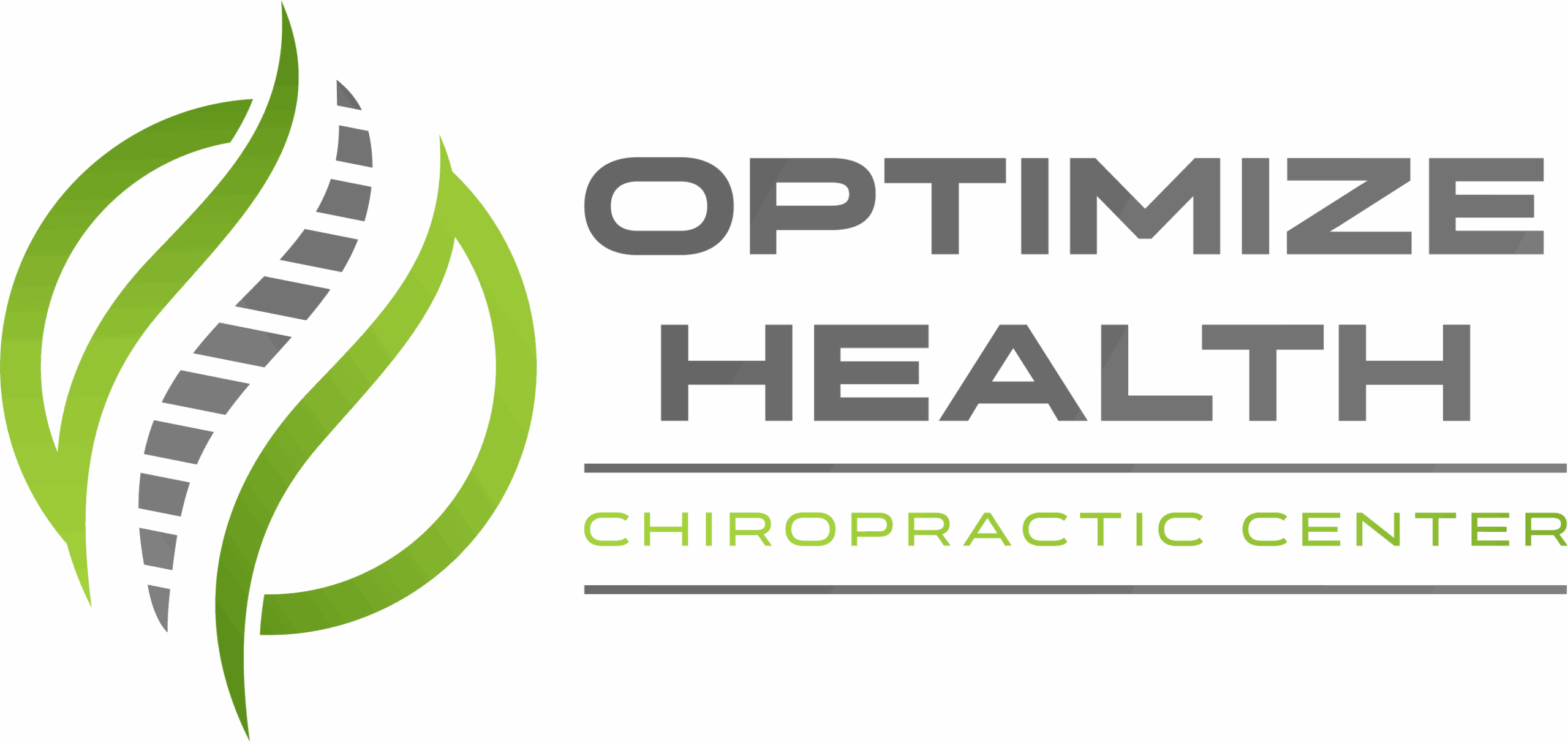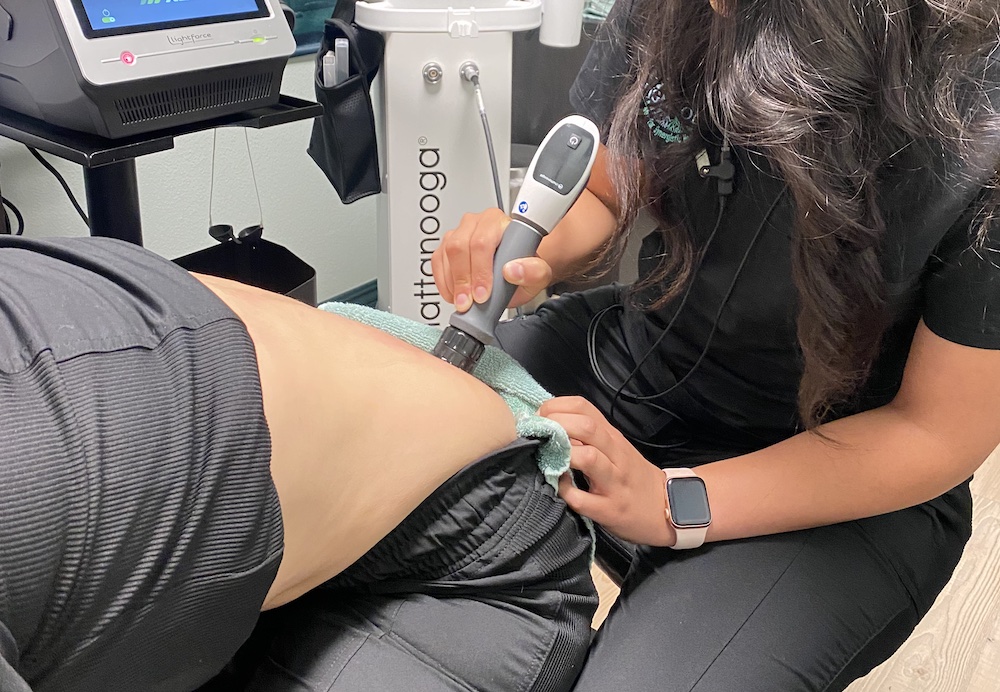As a local chiropractor, I want to share with you some effective ways to manage pain that don't solely rely on medication. Many patients are unaware of the powerful natural strategies available to them. By exploring these alternatives, you can find relief while promoting your overall well-being.
Incorporating herbal remedies into your routine can be a great start. Many herbs have anti-inflammatory properties that can help ease discomfort. Alongside this, engaging in mindful practices such as yoga or meditation can not only calm your mind but also improve your body's response to pain.
Don't underestimate the impact of your diet either. Eating a balanced diet rich in anti-inflammatory foods can significantly influence your pain levels. Additionally, incorporating physical activity into your daily routine is essential. Movement helps to release endorphins, which are natural painkillers.
Each of these approaches offers unique benefits, and understanding how they complement each other is vital. Together, they can form a holistic approach to pain management. Let's dive deeper into these strategies and find the best options for you to achieve the relief you're seeking.
Herbal Remedies
As a chiropractor, I often see patients seeking natural methods to alleviate pain, and I want to introduce you to the benefits of herbal remedies. These remedies have been used for centuries and come from plants recognized for their healing properties.
Whether you're struggling with headaches, joint discomfort, or muscle soreness, there's likely an herb that can support your healing journey.
One herb I frequently recommend is ginger. It's well-known for its anti-inflammatory effects, making it particularly useful for conditions such as arthritis or menstrual pain. You can enjoy ginger as a soothing tea, or incorporate fresh ginger into your meals for added flavor and health benefits.
Another excellent option is turmeric. The active compound in turmeric, called curcumin, is celebrated for its ability to reduce inflammation and alleviate pain. You can easily add turmeric to your diet by using it in curries, blending it into smoothies, or mixing it into warm milk for a comforting drink.
Don't overlook peppermint, either. Its menthol content offers a cooling sensation that can help relieve tension headaches and muscle aches. You might consider using diluted peppermint oil for a refreshing massage or simply sipping on peppermint tea to ease discomfort.
Willow bark is another herbal remedy worth mentioning—often referred to as "nature's aspirin." Its active ingredient, salicin, can assist in relieving pain and reducing inflammation. You can find willow bark in various forms, such as capsules or teas.
Before trying any herbal remedies, it's always a good idea to consult with a healthcare professional, especially if you're currently on medication.
Physical Activity
As your local chiropractor, I want to share with you the incredible benefits of regular exercise, especially when it comes to managing pain and enhancing your overall well-being. Engaging in physical activity isn't just about staying fit; it plays a vital role in strengthening the mind-body connection.
This connection is crucial for reducing stress and tension, which can often contribute to discomfort and pain. Incorporating exercise into your routine can be a powerful ally in your journey toward natural pain relief.
It promotes better circulation, improves flexibility, and helps to maintain proper alignment of your spine and joints—all of which are essential for optimal health.
Let's delve deeper into how physical activity can be an effective component of your holistic approach to wellness and pain management.
Benefits of Regular Exercise
As a local chiropractor, I want to share with you the incredible benefits of incorporating regular exercise into your routine, especially when it comes to enhancing your overall well-being and managing pain naturally.
When you engage in physical activities, your body releases endorphins—these are your body's natural painkillers. They not only help alleviate discomfort but also elevate your mood, which is crucial for your mental health.
Regular exercise plays a vital role in improving flexibility, strength, and endurance. This enhancement makes everyday activities much easier and, importantly, less painful.
Whether you find joy in walking, swimming, or practicing yoga, establishing a routine that resonates with you can lead to remarkable improvements in your physical condition. You may experience increased mobility, which can significantly lower your risk of injury and help prevent chronic pain over time.
Additionally, maintaining a healthy weight is essential for reducing stress on your joints. Carrying excess weight can exacerbate pain, so by engaging in regular exercise, you're not only managing your weight, but you're also alleviating that burden on your body.
Moreover, consistent physical activity is a key component of promoting better sleep. Quality sleep is fundamental for your body's recovery and repair processes.
As your chiropractor, I can't stress enough how important a good night's sleep is for effective pain management and your overall health.
By prioritizing regular exercise, you're taking an important step toward a healthier, more active lifestyle.
If you have any questions about how to integrate exercise into your routine, or if you're interested in learning more about chiropractic care and natural healing, feel free to reach out. We're here to support you on your journey to better health.
Mind-Body Connection
As your local chiropractor, I want to shed light on the remarkable connection between your mind and body, particularly in relation to physical activity and its impact on your overall health. Engaging in exercise isn't merely about strengthening your muscles; it's also about nurturing your mental well-being.
When you move, your body releases endorphins—your brain's natural pain relievers—which can significantly uplift your mood and alleviate feelings of stress and anxiety.
You may have noticed that after a good workout, your mind often feels sharper and more alert. This is no coincidence. Regular physical activity can lead to improved sleep quality, enhanced cognitive abilities, and increased resilience to pain. By participating in physical activity, you're actively supporting your mental health, making it an essential component of any effective pain relief strategy.
To tap into this powerful mind-body connection, I encourage you to incorporate a variety of physical activities into your daily life. Whether it's practicing yoga, dancing, or simply taking a walk, find what feels right for you.
Pay attention to how your body and mind respond—this awareness can help you choose activities that not only alleviate pain but also contribute to your overall well-being. By fostering both your physical and mental health, you create a dynamic synergy that can enhance your ability to manage pain and improve your quality of life.
Mindfulness and Meditation
As a chiropractor, I want to share with you some valuable tools that can help manage pain naturally—specifically, mindfulness and meditation. These practices can significantly alter your relationship with pain. Instead of resisting or fearing discomfort, mindfulness teaches you to observe it with a non-judgmental attitude. This shift can help alleviate the stress and anxiety that often worsen your pain.
To begin, find a quiet space where you can relax without interruptions. Sit comfortably and close your eyes. Take several deep breaths, allowing your body to unwind. When thoughts come to mind, simply acknowledge them, but then gently redirect your focus back to your breath.
You might also want to pay attention to the sensations in your body, particularly in the areas where you experience pain. Rather than labeling these sensations as "bad," try to notice them as they are. This practice can help you detach from the emotional burden that pain can impose.
Integrating mindfulness into your daily activities can also be beneficial. Whether it's mindful eating, walking, or even brushing your teeth, the key is to stay present in the moment. This can help lessen the tendency to dwell on discomfort.
Additionally, I encourage you to explore guided meditations specifically designed for pain management. There are many apps and online resources available that can support you in this practice.
Over time, you'll likely discover that mindfulness and meditation not only help reduce your pain but also improve your overall well-being, making it easier for you to face daily challenges. As your chiropractor, I'm here to support you on your journey toward natural healing and a healthier lifestyle.
Acupuncture
If you're looking for natural pain relief options, I'd like to introduce you to a powerful alternative: acupuncture. This ancient Chinese practice involves the insertion of very thin needles into specific points on your body to stimulate the flow of energy, or "qi." Many of my patients have found that acupuncture can effectively help with various types of pain, including headaches, back pain, and arthritis.
During an acupuncture session, you'll typically lie down in a comfortable position while the practitioner evaluates your symptoms and overall health. You might be relieved to know that the needles used are incredibly thin, and most individuals feel little to no discomfort during the insertion process.
Each treatment lasts about 30 to 60 minutes, providing you with an opportunity to relax and experience a sense of tranquility.
Acupuncture is known to promote the release of endorphins, which are your body's natural pain-relieving chemicals. This process can reduce inflammation and enhance circulation, making acupuncture a valuable tool for pain management. Some patients report immediate relief after just one session, while others may need multiple treatments to achieve their desired outcomes.
If you're considering acupuncture as part of your healing journey, it's essential to choose a licensed and experienced practitioner. They can customize the treatment to meet your unique needs and guide you on the number of sessions that may be beneficial.
Open communication about your pain and any concerns is crucial, as it helps tailor the approach to you. With an open mind and a bit of patience, acupuncture could become an integral part of your natural healing toolkit.
As a chiropractor, I believe in the power of holistic approaches, and I'm here to support you in exploring all avenues for your well-being.
Hot and Cold Therapy
As your local chiropractor, I want to share some valuable insights on the benefits of hot and cold therapy for pain management. Many patients come to me seeking relief, and understanding how to use these methods can significantly enhance your healing process.
Heat therapy is fantastic for soothing and relaxing tight muscles. It can help increase blood flow to the affected area, promoting healing and relieving stiffness.
On the other hand, cold therapy is essential for reducing inflammation and numbing acute pain, especially after an injury. By alternating between hot and cold treatments, you can effectively manage discomfort and support your recovery.
By incorporating these techniques into your pain management routine, you'll empower yourself to take control of your healing journey.
If you're unsure about how to use heat and cold therapy effectively, please don't hesitate to ask during your next visit. Together, we can create a personalized approach to your well-being.
Benefits of Hot Therapy
As your local chiropractor, I want to share the benefits of hot therapy for those of you who may not be familiar with its healing properties. Using warmth, such as from a heating pad, can provide immediate relief for sore muscles and aching joints.
When heat is applied, it increases blood flow to the targeted area, promoting both healing and relaxation. This enhanced circulation helps deliver essential nutrients and oxygen, which can significantly reduce stiffness and discomfort.
Hot therapy is particularly beneficial for chronic pain conditions like arthritis or lower back pain. Many of my patients find that applying heat helps ease tension and improve flexibility, enabling them to move more freely and comfortably.
Additionally, if you're struggling with menstrual cramps, heat can effectively relax the muscles in the abdomen, helping to alleviate pain.
Incorporating hot therapy into your routine is quite simple. You can utilize a heating pad, wrap a warm towel around the affected area, or even enjoy a warm bath.
Just remember to protect your skin by placing a cloth between the heat source and your skin to prevent burns.
I recommend using heat therapy for about 15 to 20 minutes at a time, allowing your body to rest in between sessions. It's important to listen to your body; if something feels too hot or uncomfortable, please remove the heat source immediately.
With regular use, hot therapy can become an effective part of your overall pain management strategy alongside chiropractic care. I'm here to guide you through this process and support your journey towards natural healing.
Advantages of Cold Therapy
As a local Chiropractor, I want to share with you the incredible benefits of cold therapy for managing pain and inflammation, particularly if you're new to chiropractic care and natural healing methods.
Cold therapy is a powerful technique that can significantly aid in your recovery after an injury or intense physical activity. When you apply cold to an affected area, it constricts blood vessels, which helps reduce swelling and numb the area, ultimately alleviating pain. This approach is especially effective for acute injuries, such as sprains, strains, or bruises, as it helps to prevent further damage while promoting healing.
Using ice packs or cold compresses can accelerate your recovery time. By minimizing inflammation, you can shorten the overall healing period and get back to your regular activities more quickly. It's important to use cold therapy for about 15-20 minutes at a time, allowing your skin to rest in between sessions to prevent frostbite.
Moreover, cold therapy can be a great way to relieve muscle soreness after a workout. If you've pushed your limits during exercise, applying cold can help ease discomfort and enhance recovery.
The beauty of cold therapy is that it's simple and accessible; all you need is ice or a cold pack.
Incorporating cold therapy into your pain management routine can empower you to take charge of your recovery process. It complements chiropractic care beautifully, allowing you to feel better and return to your activities sooner.
If you have any questions about how to integrate cold therapy into your healing journey, don't hesitate to ask during your next visit!
Aromatherapy
As a local chiropractor, I often emphasize the importance of holistic approaches to health and wellness, and one of the methods I recommend is aromatherapy. This practice utilizes essential oils and soothing scents to provide a natural way to manage pain and promote overall well-being. Many of my patients find it an effective complement to their chiropractic care.
Aromatherapy harnesses the power of aromatic plants, allowing you to alleviate discomfort, reduce stress, and enhance your quality of life. Essential oils such as lavender, peppermint, and eucalyptus are particularly renowned for their pain-relieving properties and can be beneficial in your healing journey.
To incorporate aromatherapy into your routine, consider using a diffuser. By adding a few drops of your preferred essential oil to water in the diffuser, you can fill your living space with a calming aroma that may help ease tension headaches and muscle pain. Inhaling these fragrances can create a tranquil environment, assisting in your recovery process.
For those on-the-go, creating a personal inhaler by placing essential oils on a cotton ball can provide instant relief whenever needed.
Topical application is another effective method I often recommend. By diluting essential oils with a carrier oil, such as coconut or jojoba oil, you can apply the mixture directly to the affected areas. For instance, peppermint oil has a cooling effect that can alleviate migraines and sore muscles. Always remember to conduct a patch test first to ensure there are no adverse reactions.
Additionally, consider adding essential oils to your bath for a truly relaxing experience. The combination of warm water and aromatic oils can create a soothing environment conducive to easing pain and promoting relaxation.
Dietary Adjustments
As a local chiropractor, I want to share some important insights on how dietary adjustments can significantly enhance your pain management strategy. The foods you consume not only impact your overall health but also influence how your body reacts to pain.
By making some thoughtful changes to your diet, you can help reduce inflammation and improve your overall well-being.
Here are some dietary adjustments I recommend for managing pain naturally:
- Boost Omega-3 Fatty Acids: Incorporate sources like fatty fish (think salmon and sardines), walnuts, and flaxseeds into your meals. These foods are known for their ability to reduce inflammation, which can help alleviate pain.
- Embrace Fruits and Vegetables: Aim to fill your plate with colorful produce, such as berries, spinach, and broccoli. These are packed with antioxidants that can combat oxidative stress in the body, further supporting your pain management efforts.
- Cut Back on Processed Foods: It's wise to limit your intake of sugary snacks, refined carbohydrates, and trans fats. These types of foods can promote inflammation and may exacerbate pain levels.
- Prioritize Hydration: Make sure to drink plenty of water throughout the day. Staying hydrated is crucial for your body's functions and can also help reduce joint stiffness, making you feel more comfortable.
- Incorporate Anti-Inflammatory Spices: Spices like turmeric and ginger can be fantastic additions to your diet. They've natural pain-relieving properties that can complement other aspects of your healing journey.
By making these dietary changes, you can support your body's ability to heal and manage pain more effectively.
Conclusion
As your local chiropractor, I want to share with you seven effective natural pain relief strategies that can significantly enhance your overall well-being. Chiropractic care is just one piece of the puzzle, and by integrating these approaches into your routine, you can manage pain more effectively.
First, consider the benefits of herbal remedies. Many patients find relief through natural supplements that support their body's healing processes. Staying active is another key component; regular movement and exercise can help alleviate pain and improve your mobility.
Mindfulness practices, such as meditation and deep-breathing exercises, can also be incredibly beneficial in managing pain. Additionally, therapies like acupuncture, hot and cold treatments, and aromatherapy can provide relief by addressing pain from multiple angles.
Don't forget the importance of dietary adjustments as well. What you eat can have a profound impact on your health and pain levels, so focusing on a balanced and nutritious diet is essential.
As always, I encourage you to consult with a healthcare professional, such as myself, to find the best combination of these strategies tailored to your individual needs. Let's start exploring these natural options together and take charge of your pain relief journey today!



